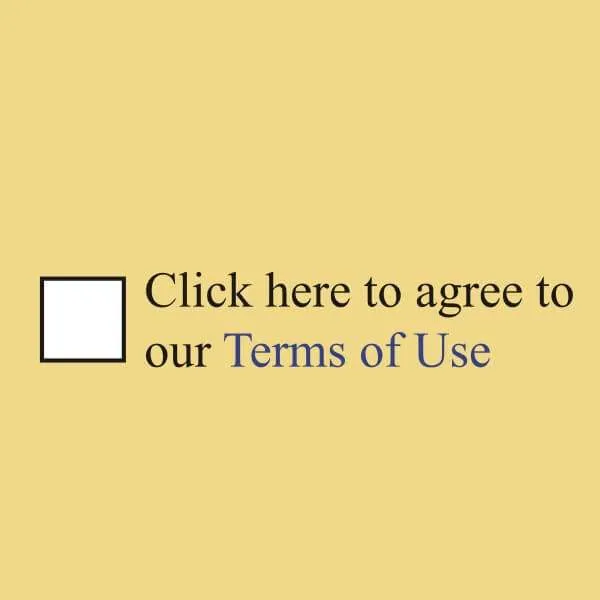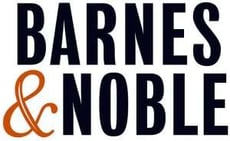When Are Terms of Use Legally Binding?

You've done it many times before... you click the box that says "click to agree to our Terms of Use" (and let's be real - you didn't read it). Does that check box create a legally binding agreement? What about when companies just post a terms of use and you never click on the link for those "agreements"? This article discusses the question: "when are terms of use legally binding agreements?" The short answer is that terms of use are legally binding when the user has sufficient notice of the fact that he/she is agreeing to the terms of use.
What is Browse-Wrap vs. Click-Wrap Agreement and Why Does it Matter?
A browse-wrap agreement is one that is simply posted on a website and purports to be a binding agreement. A browse-wrap agreement does not require the user to check a box, click "submit," or require any affirmative act by the user to accept the terms. As described below, browse-wrap agreements are only enforceable when they are posted in a conspicuous location and the posting contains language sufficient to put a user on notice that they are entering into a binding agreement.
A click-wrap agreement is one that requires the user to affirmatively accept the agreement. Click-wrap agreements come in several forms. For example, a click-wrap agreement includes checking a box to agree to the terms of use , or clicking a button that states that the user agrees to the business' terms of use. Click-wrap agreements are generally legally binding.
In order for a contract to be binding, there must be an "offer" and "acceptance" of that offer. And for an acceptance to occur, the offeree must have notice of the fact that that they are entering into an agreement. Some terms of use and privacy policies (as well as other agreements such as software licenses) do not provide sufficient notice to users of the fact that they are entering into an agreement and courts have ruled that these agreements are unenforceable. It is important that your business provide notice to users of the fact that they are entering into an agreement.
When Are Terms of Use Legally Binding?
 In a recent case decided by the Ninth Circuit Court of Appeals, the court ruled that a Terms of Use agreement posted on Barnes and Noble's website was not enforceable (click here to read the August, 2014 opinion in Nguyen v. Barnes and Noble Inc.). In that case, a customer bought an HP Touchpad on Barnes and Noble's site. Then Barnes and Noble cancelled the order because of a lack of inventory. Kevin Khoa Nguyen filed a class action lawsuit against Barnes and Noble in court and Barnes and Noble argued that the dispute had to be resolved in arbitration instead of in court based on an arbitration clause in their Terms of Use. A hyperlink to the Terms of Use was posted just below the "Proceed to Checkout" button that Mr. Nguyen had to click to purchase the Touchpad. But the court ruled that the Terms of Use was not a legally binding agreement because Mr. Nguyen did not have sufficient notice of the agreement.
In a recent case decided by the Ninth Circuit Court of Appeals, the court ruled that a Terms of Use agreement posted on Barnes and Noble's website was not enforceable (click here to read the August, 2014 opinion in Nguyen v. Barnes and Noble Inc.). In that case, a customer bought an HP Touchpad on Barnes and Noble's site. Then Barnes and Noble cancelled the order because of a lack of inventory. Kevin Khoa Nguyen filed a class action lawsuit against Barnes and Noble in court and Barnes and Noble argued that the dispute had to be resolved in arbitration instead of in court based on an arbitration clause in their Terms of Use. A hyperlink to the Terms of Use was posted just below the "Proceed to Checkout" button that Mr. Nguyen had to click to purchase the Touchpad. But the court ruled that the Terms of Use was not a legally binding agreement because Mr. Nguyen did not have sufficient notice of the agreement.
In order for an agreement, including a terms of use, to be legally binding, the user must have notice of the agreement. This can occur through actual notice (i.e. the user actually clicks on the agreement and sees that their continued use of the site results in a binding agreement) or constructive notice. Constructive notice is based on (1) the location/conspicuousness of the posting of the agreement (usually a hyperlink), and (2) the language contained in the posting. Each of these are discussed below.
Location & Conspicuousness of Hyperlink
Courts have consistently ruled that when a hyperlink to a terms of use or privacy policy is buried deep in the website in an inconspicuous location, then there is insufficient notice to the user that they are agreeing to the terms of use or privacy policy. Thus, unless the user has actual notice of the binding nature of the agreement, then the agreement is not legally binding. This is the traditional browse-wrap approach. But in Mr. Nguyen's case, the court found that the hyperlink was close enough to the "Checkout" button that it met this prong of the test for constructive notice.
Language in Posting of Agreement
Despite the fact that the hyperlink to the Terms of Use was posted in a conspicuous place, Barnes and Noble's Terms of Use was deemed unenforceable because it didn't contain any language that put the user on notice that they were agreeing to the Terms (the hyperlink simply stated "Terms of Use"). The posting of the terms of use must contain language that would put a "reasonable person" on notice of the fact that they are agreeing to the terms of use. The Court in Mr. Nguyen's case differentiated that case from a case where a similar "Checkout" screen contained the phrase "Review terms" - which was held to be sufficient to put a user on notice and create a legally binding agreement. This approach remains much more shaky then the click-wrap approach of requiring the user to take some affirmative action to agree to the terms of use, privacy policy, or other agreement.
How to Make Terms of Use Legally Binding
It is simply best practice and fair to your users to ensure that they know that they are entering into an agreement. However, beyond being fair, it is necessary to provide notice to ensure that your terms of use and privacy policies are legally binding. In order to do this, the best practice is to post the entire terms of use and require the user to scroll through the agreements and then click a button or check-box to agree to the terms of use. But at the least, business owners should post their terms of use and privacy policies in a conspicuous place on the website and require the user to take some affirmative action to agree to the terms of use or privacy policy. The Court in Mr. Nguyen's case explained it best:
While failure to read a contract before agreeing to its terms does not relieve a party of its obligations under the contract . . . the onus must be on website owners to put users on notice of the terms to which they wish to bind consumers.
Drop us a line to discuss how to ensure that your terms of use and privacy policies are legally binding.
DISCLAIMER: The information in this article is provided for informational purposes only and should not be construed or relied upon as legal advice. This article may constitute attorney advertising under applicable state laws.
Categories
Recent Posts
- Key Terms: SAFEs & Convertible Notes for Pre-seed Funding
- A Guide To Raising Money From Accredited Investors
- Startup 101: Overview of Pre-Seed and Seed Investment
- SPZ Legal's Commitment to Social Impact with Pledge 1%
- Issuing Equity to Service Providers? A Guide to Equity Incentive Plans for Startups.
- A Guide to Navigating the New Beneficial Ownership Information Reporting Requirements
- Unveiling the Power of Venture Debt: A Legal Guide for Startup Founders
- SPZ Welcomes New Team Member, Sanam Analouei!